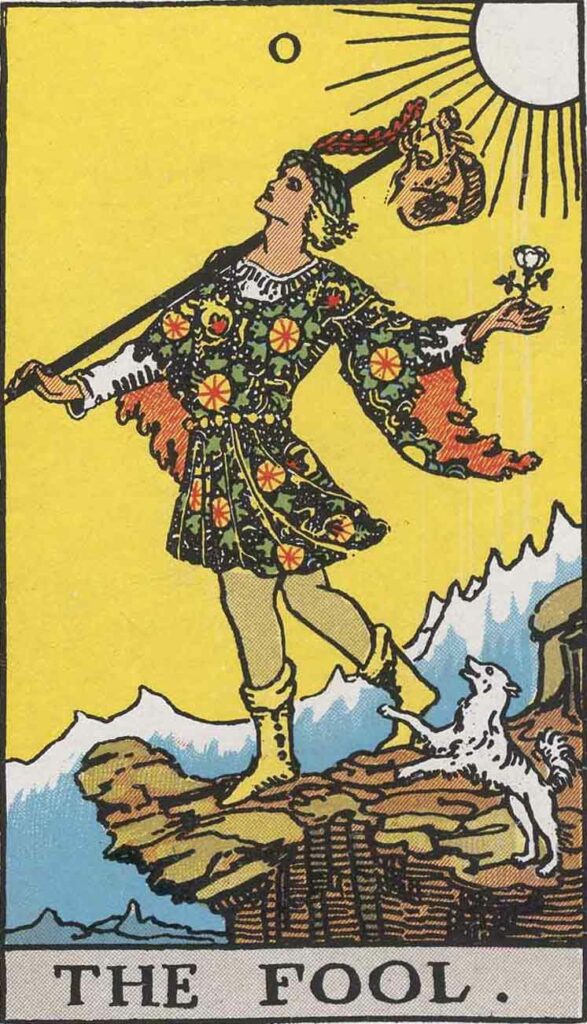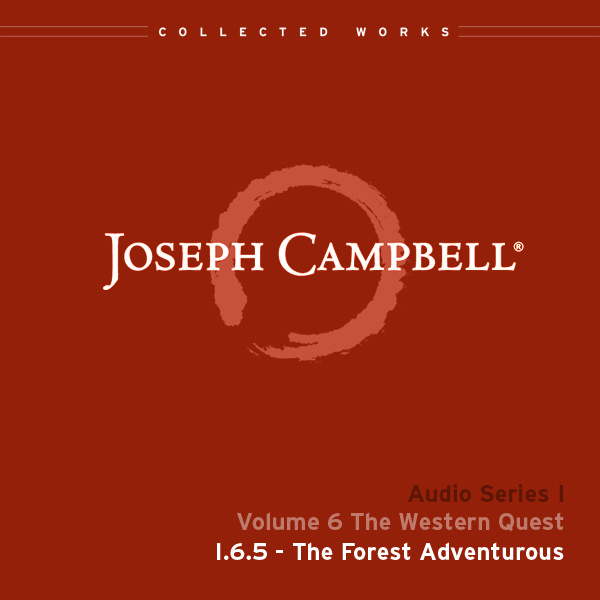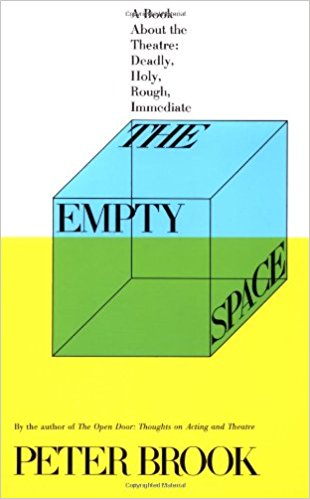The Edge of the Precipice

As we begin a new year, our calendar seems to have a magical effect upon us, triggering a certain archetypal response in our souls which may be appropriate for all new beginnings and ends. Thus our Gregorian calendar, with its hidden archetypal background, is preparing us to face the new challenges and problems of the new year.
Although no one doubts the cosmic reality of the next sunrise, at least for several billion years, the length of our individual lives is but a flash of lightning. The question of our own mortality, or the mortality of those we love, is thus riddled with doubt and fear. We all know that only a few precious turns around the sun are granted to us, and we never know which rotation will be our last tour. In the words of the mad Ophelia: “Lord, we know what we are but know not what we may be.” (Hamlet 4.5, lines 48–49) Old or young, sick or healthy, rich or poor, no one knows the expiration date that will be added to their epitaph. To mark in advance our own calendar run with the words consummatum est (“it is finished”) remains beyond our mortal grasp ”—the rest is silence.” (5.2, line 395)
Although the knowledge of our death may be denied to us by the order of things, it bleeds into that tremendous and fascinating mystery of being alive between birthlife and death. As Shakespeare again expressed it in Hamlet, lacking such knowledge of our death, we must learn to understand the “special providence in the fall of a sparrow”:
If it be now, ’tis not to come; if it be
not to come, it will be now; if it be not now, yet it will come.
The readiness is all. (5.2, lines 234 -237)
Read more
The awareness of our mortality is a double-edged sword: it may lead to the realization of profound gratitude, that every day is a gift and a miracle, but it may also lead to a heightened awareness of the immense background of death and nothingness that engulfs every star. To the extent that we are alive, therefore, the light has won its vindication over death’s dominion. But Death, the Unconscious, is all around us, even in the physical form of “dark matter.”

Likewise, the beginning of a new year represents an immense gift which opens the door to infinite possibilities—including the ones that may prove to be our downfall.
Such is the standard image of the Fool from the tarot deck: a youth happily walking toward a cliff, only one more step to make before falling into the abyss. In its mythic dimensions, the Fool represents a certain archetypal constellation in which great danger is combined with free-spirited naivete. This androgynous figure represents youthful innocence, a childlike stranger free from the cares of this world. They strut down a path, with their gaze to the sky, dancing toward the precipice of life and ruin.
The presence of the dog at his side, as if warning the Fool of the impending folly, is an emblem of instinct, the connection to the earth, which the wonderstruck hero sorely lacks. For in its inferior pole, the Fool is indistinguishable from literal foolishness, reckless abandon, and extreme risk-taking. Also closely associated with madness, as in Batman’s Joker figure, the Fool can exhibit a kind of suicidal or even criminal death drive, a compulsion or addiction, which leads the youth to walk over the cliff. The Fool thus contains divine and demonic aspects that must be taken seriously and with great discrimination—lest we ourselves fall into the trap of the Fool!
For the edge of this precipice is quite real today for individual egos as it is for nations. Indeed, it involves the entire social collective of humanity at large. In our own times we are dealing with end-of-time questions such as the ones brought out in books like Hegemony or Survival and The Precipice by Noam Chomsky. There are certain ecological and geopolitical conditions we face today that point to a whole constellation of apocalyptic signs, impending catastrophes at scales that have never been imagined. These existential conditions, aloofness of which drives the Fool to the precipice, seriously put human survival into question. For our present world situation is not simply another period of tensions and confusions like the ones we’ve had in the past. Today we face absolutely unprecedented conditions which our ancestors could have barely imagined in their myths about the end of the world.
In the present horizon of mythic history, it is not an exaggeration to say that we are living in end times, breathing a toxic cultural atmosphere, with mass-scale disasters looming on every side. Taken together, it is hard to avoid the feeling that we are passing through a possibly terminal stage of human history.
Faced with the new horsemen of the apocalypse–Climate Catastrophe (Famine), Nuclear Annihilation (War), New Pandemics (Disease), Social and Economic Breakdown (Death) – our civilization as a whole stands in the situation of the Fool about to walk off the cliff.
Thus the Fool perfectly mirrors our current existential situation as a species, the understanding of which is made clear by its mythohistorical dimensions. As Campbell states of the primary functions of mythology:
The first function of a mythology is to reconcile waking consciousness to the mysterium tremendum et fascinans of this universe as it is: the second being to render an interpretive total image of the same, as known to contemporary consciousness. Shakespeare’s definition of the function of his art, “to hold, as ’twere, the mirror up to nature,” is thus equally a definition of mythology. It is the revelation to waking consciousness of the powers of its own sustaining source. (The Masks of God, Volume 4: Creative Mythology, 13)
Joseph Campbell thus credits Hamlet’s speech with the highest honor that a mythologist can give, that of providing a definition of mythology itself. In the culminating volume of Masks of God, Vol 4: Creative Mythology, Campbell comes home to the creative foundation that makes mythology indistinguishable from art. To the question, what is art? Campbell directly answers: “it is mythology itself.” Creative mythology, whose reflective function it is, like Hamlet’s mirror, to imitate in the medium of consciousness the archetypal powers of its own unconscious source.
 Norland Téllez is a visual artist and teacher as well as writer and mythologist, combining the art of story-telling with the power of philosophical thought. He is both a visual development artist and a writer, as well as a story analyst in the realm of Mythological Studies. He attended CalArts and graduated from their character animation department in 1999. Norland went on to pursue his masters and doctorate degrees at Pacifica Graduate Institute, graduating in 2009 with a dissertation on the Esoteric Dimensions of the Popol Vuh, the Sacred Book of the Quiché-Maya.
Find more at mythistorian.com.
Norland Téllez is a visual artist and teacher as well as writer and mythologist, combining the art of story-telling with the power of philosophical thought. He is both a visual development artist and a writer, as well as a story analyst in the realm of Mythological Studies. He attended CalArts and graduated from their character animation department in 1999. Norland went on to pursue his masters and doctorate degrees at Pacifica Graduate Institute, graduating in 2009 with a dissertation on the Esoteric Dimensions of the Popol Vuh, the Sacred Book of the Quiché-Maya.
Find more at mythistorian.com. Weekly Quote
Wisdom and foolishness are practically the same. Both are indifferent to the opinions of the world.
Featured Video
Myth Resources
The Empty Space: A Book About the Theatre: Deadly, Holy, Rough, Immediate
 Peter Brook’s career, beginning in the 1940s with radical productions of Shakespeare with a modern experimental sensibility and continuing to his recent work in the worlds of opera and epic theater, makes him perhaps the most influential director of the 20th century. Cofounder of the Royal Shakespeare Company and director of the International Center for Theater Research in Paris, perhaps Brook’s greatest legacy will be The Empty Space. His 1968 book divides the theatrical landscape, as Brook saw it, into four different types: the Deadly Theater (the conventional theater, formulaic and unsatisfying), the Holy Theater (which seeks to rediscover ritual and drama’s spiritual dimension, best expressed by the writings of Artaud and the work of director Jerzy Grotowski), the Rough Theater (a theater of the people, against pretension and full of noise and action, best typified by the Elizabethan theater), and the Immediate Theater, which Brook identifies his own career with, an attempt to discover a fluid and ever-changing style that emphasizes the joy of the theatrical experience. What differentiates Brook’s writing from so many other theatrical gurus is its extraordinary clarity. His gentle illumination of the four types of theater is conversational, even chatty, and though passionately felt, it’s entirely lacking in the sort of didactic bombast that flaws many similar texts.–John Longenbaugh
Peter Brook’s career, beginning in the 1940s with radical productions of Shakespeare with a modern experimental sensibility and continuing to his recent work in the worlds of opera and epic theater, makes him perhaps the most influential director of the 20th century. Cofounder of the Royal Shakespeare Company and director of the International Center for Theater Research in Paris, perhaps Brook’s greatest legacy will be The Empty Space. His 1968 book divides the theatrical landscape, as Brook saw it, into four different types: the Deadly Theater (the conventional theater, formulaic and unsatisfying), the Holy Theater (which seeks to rediscover ritual and drama’s spiritual dimension, best expressed by the writings of Artaud and the work of director Jerzy Grotowski), the Rough Theater (a theater of the people, against pretension and full of noise and action, best typified by the Elizabethan theater), and the Immediate Theater, which Brook identifies his own career with, an attempt to discover a fluid and ever-changing style that emphasizes the joy of the theatrical experience. What differentiates Brook’s writing from so many other theatrical gurus is its extraordinary clarity. His gentle illumination of the four types of theater is conversational, even chatty, and though passionately felt, it’s entirely lacking in the sort of didactic bombast that flaws many similar texts.–John Longenbaugh
Featured Work
Tarot & the Christian Myth (Audio: Lecture II.3.2)
Joseph Campbell delves into the mythological symbolism of the traditional tarot deck. After showing that the four suits of the minor arcana correspond to the four classes of traditional society, he goes on to unlock the spiritual significance of the cards of the major arcana, showing that, in fact, they represent an initiation into ancient spiritual lessons.
This lecture was recorded at the Esalen Institute in Big Sur, California in 1971 and 1975.
Subscribe to JCF’s email list to receive a weekly MythBlast newsletter along with occasional news and special offers from JCF.




